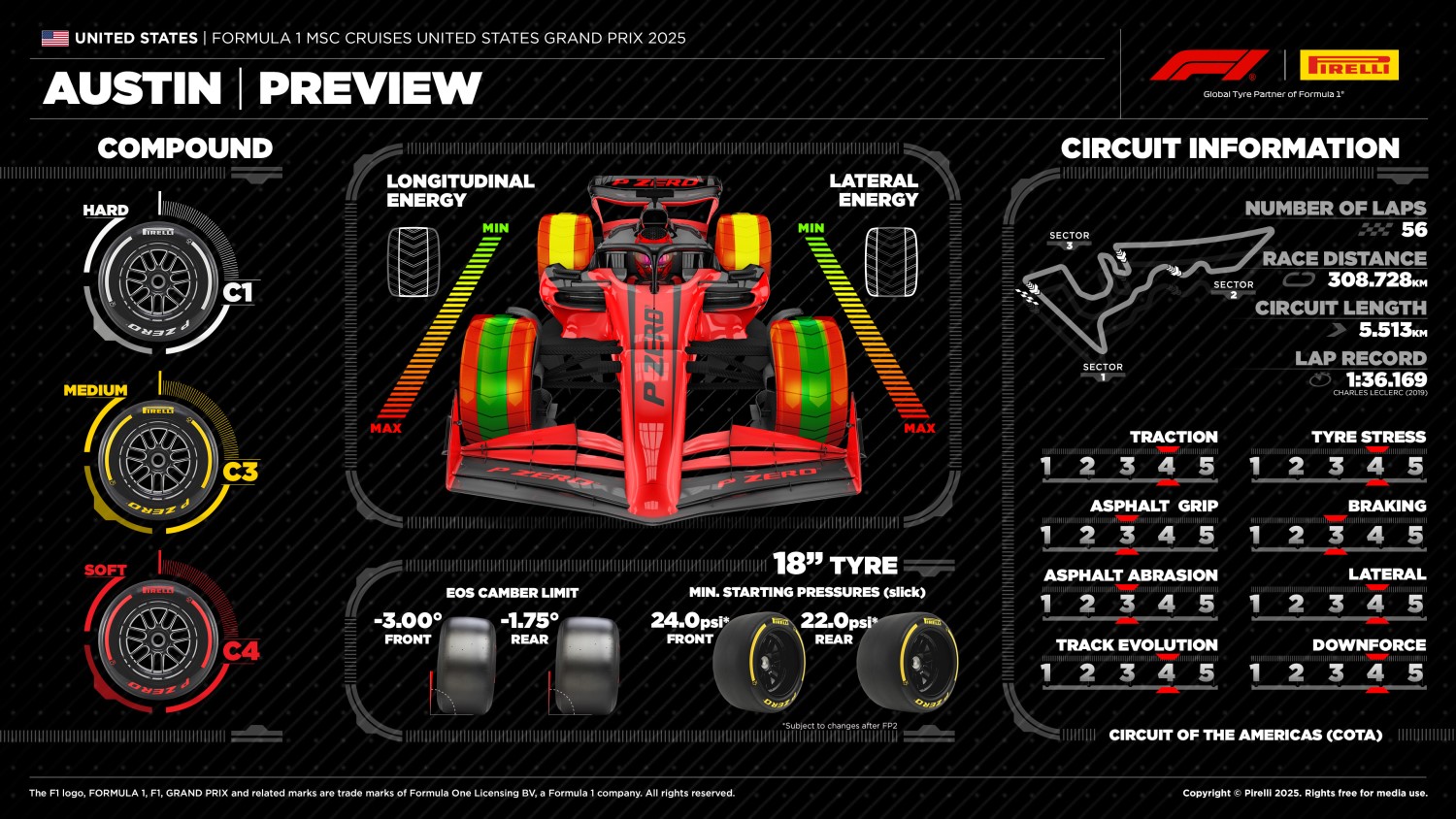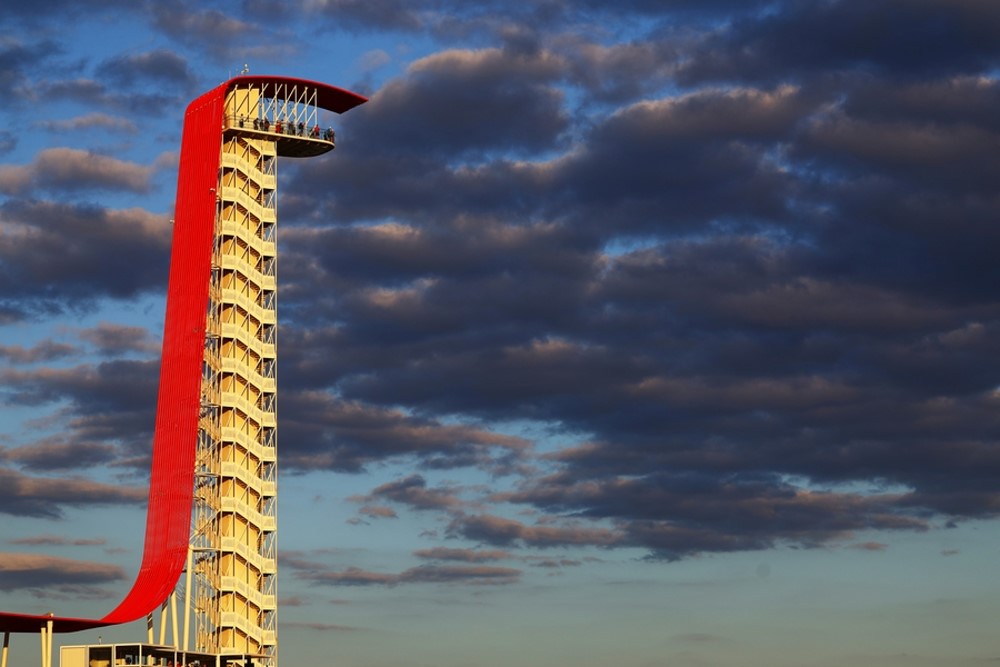Formula 1 News: 2025 United States Grand Prix at COTA Preview
Formula 1 heads to America for the second time this season to kick off the USA-Mexico-Brazil tripleheader weekends at the Circuit of the Americas (COTA) for the USGP.
–by Mark Cipolloni–
The United States Grand Prix has had a diverse and storied history, traversing the breadth of the nation since first being run in Sebring, Florida, in 1959. It had a lengthy spell at leafy Watkins Glen in upstate New York, a short and unsuccessful stint around the streets of Phoenix, Arizona, and a stretch at the Indianapolis Motor Speedway, utilizing part of its fabled oval.
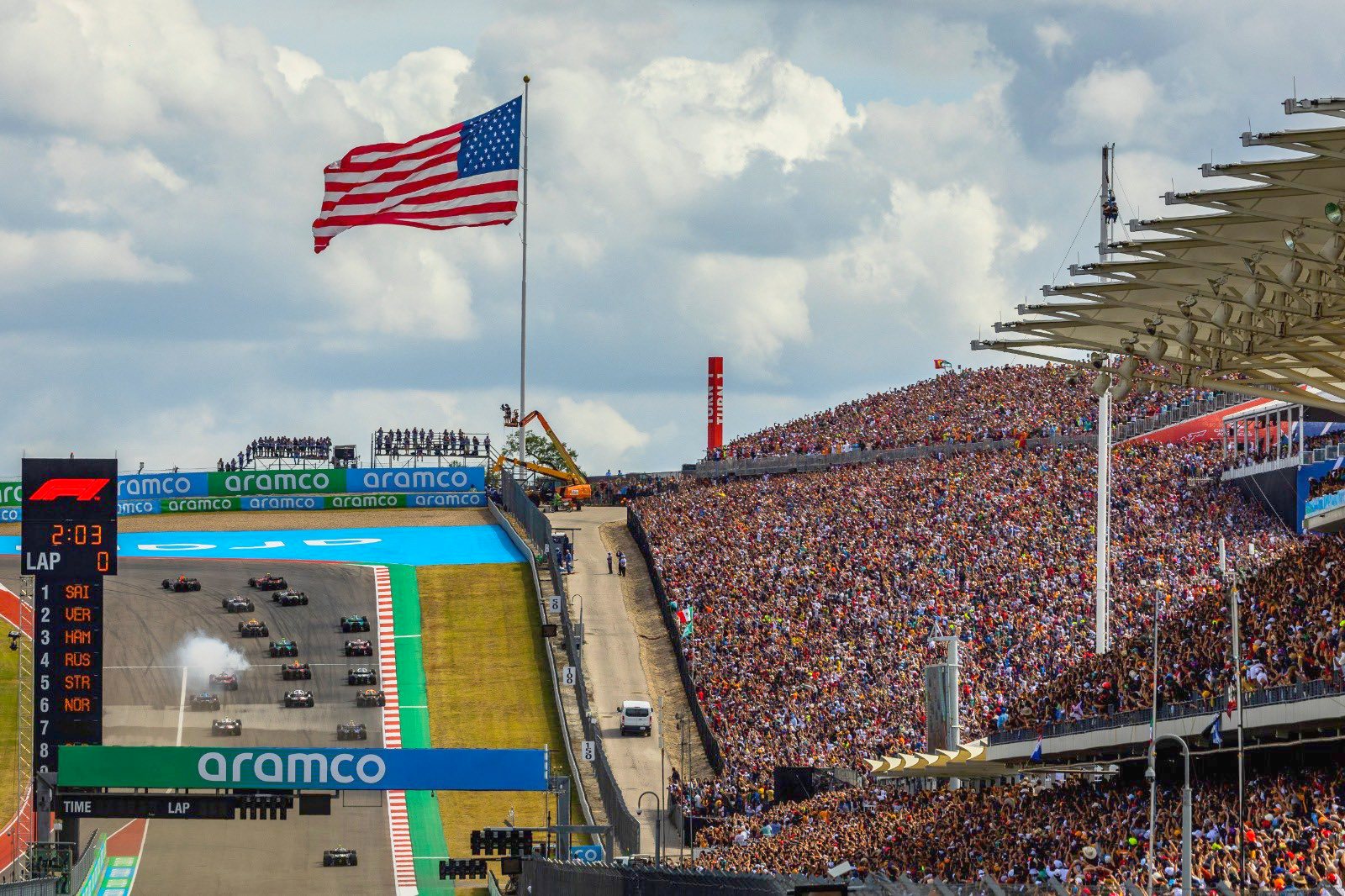
A permanent home for Formula 1 was finally found in 2012, when the championship rolled into a purpose-built circuit on the outskirts of Austin, Texas, and immediately fell head over heels with the layout, the venue, and the nearby offerings. Austin, a city famed for its bars, music haunts, and quirky meeting points, became a favorite among the Formula 1 community, while the popularity of the grand prix continues to grow.
Austin’s status as a beloved venue is heightened for drivers by the layout of COTA, with distinct sections and challenges. COTA’s showpiece is Turn 1, named Big Red, which rises steeply and invites different racing lines, before the circuit plunges into a sequence of high-speed esses reminiscent of famed sections from Silverstone and Suzuka. The lengthy back straight provides the best overtaking opportunity, into Turn 12, while another iconic complex is the triple-apex right-hand Turns 16/17/18, which takes drivers past the distinctive COTA Tower.
For the third successive season, the United States Grand Prix will host a F1 Sprint race, meaning there is just one practice session on Friday ahead of Sprint Qualifying and the Sprint Race, which is scheduled for Saturday afternoon.
The city of Austin always embraces F1’s arrival and delivers a brilliant atmosphere throughout the race weekend, making it one of the favored stops on the season’s calendar for many team members.
The race isn’t just a popular one with spectators, either, as many of the drivers list it as one of the best circuits on the calendar thanks to its undulating first corner, high-speed changes of direction and challenging finish to the lap. On top of that, there are a number of overtaking spots that make it a good all-round test that often provides exciting racing.
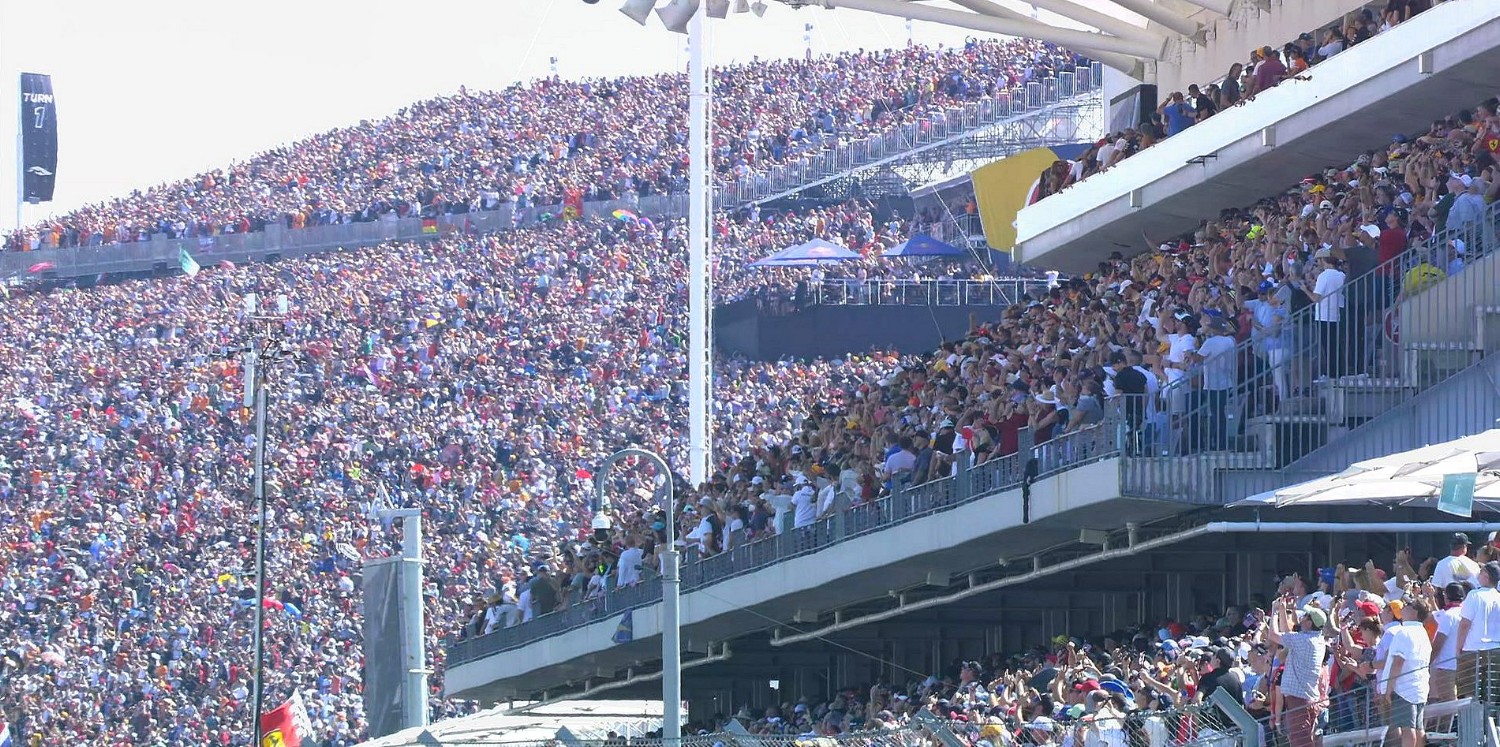
Weather Forecast
Friday – FP1 and Sprint Qualifying
Forecast: Sunny with a gentle breeze. Temperature: 33C / 91F Chance of precipitation: <5%
Saturday – Sprint and Qualifying
Forecast: Sunny with a gentle breeze. Temperature: 32C / 89F Chance of precipitation: <5%
Sunday – Race
Forecast: Sunny and warm, chance of rain in the early evening. Temperature: 33C / 91F Chance of precipitation: 30%
Fact File: United States Grand Prix (USGP)
- COTA is one of nine tracks on the 2025 F1 calendar that is fully anticlockwise, alongside Jeddah, Miami, Imola, Baku, Singapore, Interlagos, Las Vegas, and Yas Marina.
- It is tied with Baku for the second-most corners on any F1 2025 track, with 20, behind Jeddah (27).
- The incline from the starting grid to the apex at Turn One is 134 feet, one of the highest elevation changes on the whole f1 calendar.
- The Circuit of the Americas is one of the bumpiest tracks of the year due to subsidence.
- The bumps also tend to move and change year-on-year. The track is regularly ground down and resurfaced to try and smooth these challenges. Much of it was resurfaced again this year
- Several corners at COTA were inspired by iconic turns from European tracks.
- These include Turns 3 to 6, which are modeled on the Maggotts and Becketts section of Silverstone. Turns 12 to 15 replicate Hockenheim’s stadium section and Turns 16-18 are similar to Turn 8 at Istanbul Park.
- The track requires moderately high downforce and has a large DRS effect. That allows teams to run reasonably large wings as a result.
- The first sector is incredibly challenging and technical. A lot of time can be gained and lost through the interconnected series of corners.
- COTA is one of nine tracks on the calendar that is fully anticlockwise. The others are: Jeddah, Miami, Imola, Baku, Singapore, Interlagos, Las Vegas, and Yas Marina.
- It is one of the busiest laps for gear changes, with 70 recorded across one circuit. That is the third highest total of the year, behind only Bahrain and Baku.
- The entry to Turn 1 features the single biggest corner elevation change of the season. The track has a man-made climb 30 meters upwards in just over 200 meters of track.
- For comparison, COTA’s Observation Tower measures in at 77 meters tall.
- Several corners feature wide entries to encourage different lines and promote overtaking. These include Turns 1, 11, and 15.
- The latter also forces the drivers to brake whilst the car is turning at the same time. This can cause lockups if pushing the tire over the limit of adhesion.
- The weather in Texas can be unpredictable, particularly the temperatures. They can vary from single digits on cool mornings to reaching into the 30s on the very warmest days.
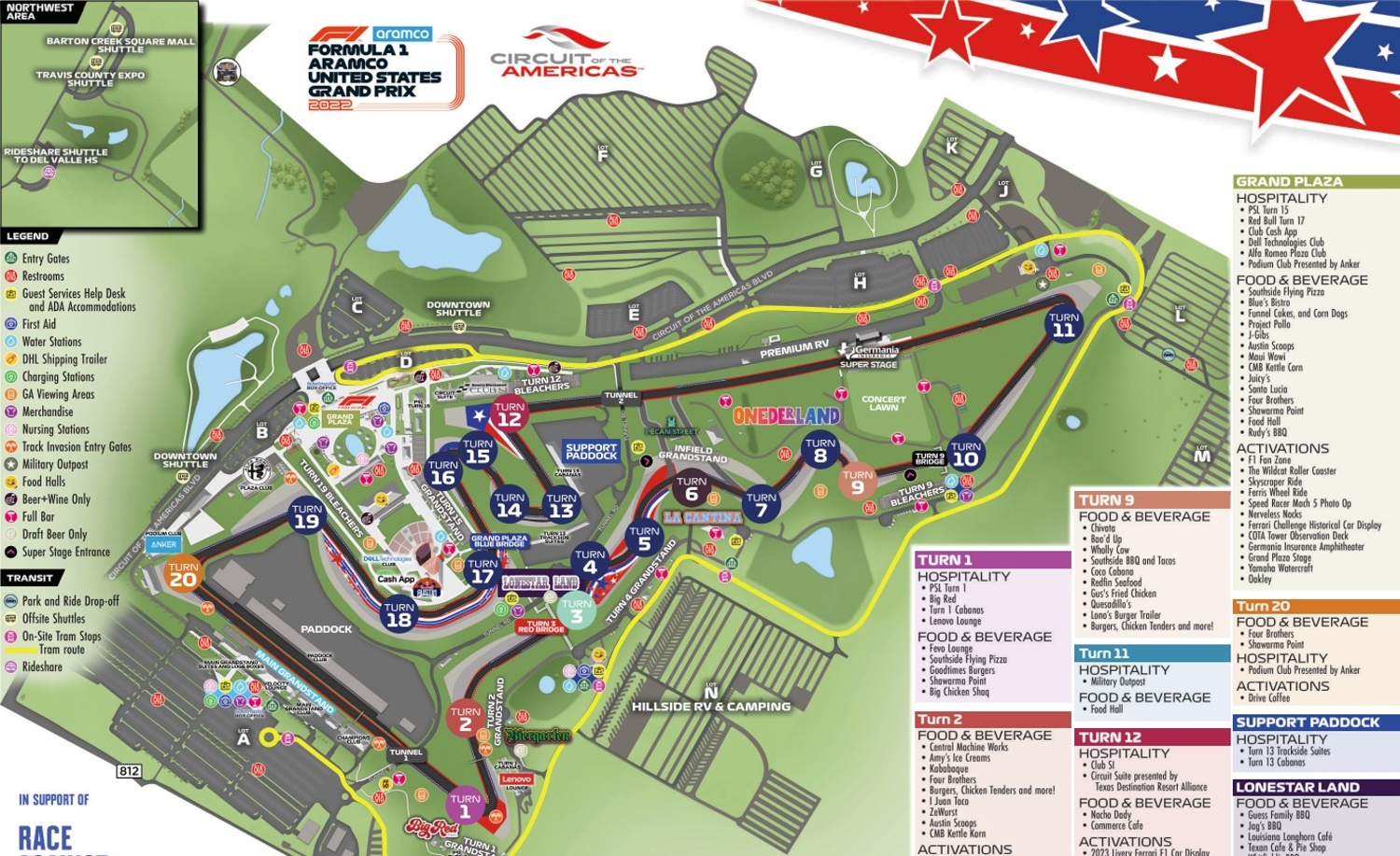
Unlocking the USGP Lap
Overtaking: COTA tends to feature a good number of overtakes, with 40 on average being made outside of the first lap and restarts. Some 72 percent of passes are made using DRS – with the two zones being situated on the runs to Turns One and 12, the latter being the preferred spot for moves.
Safety Cars: The Safety Car was last used in 2024. Lewis Hamilton uncharacteristically spun out on the second lap of the 2024 United States Grand Prix, with his race ending in the gravel trap. Virtual Safety Cars are a bit more common, with many uses since its inception. The VSC rate is above average and is also in part due to a retirement rate above the norm.
Strategy: The selection of tire compounds—C1 as Hard, the C3 as medium, and the C4 as soft—will be used with the hope that the C1 might be too slow, prompting the teams to try a 2-stop race using the C3 and C4 compounds. This is not usually a one-stop race, but this year almost all the races have been. Ease of overtaking, a short pit-lane delta, and high tire degradation are factors that all come into play.
A lap begins with a climb of 90 feet as the cars approach one of the most iconic hairpins on the whole calendar: Turn One. Uphill braking shortens the slow-down distance for the corner, but a very wide entry massively aids wheel-to-wheel battling. The apex is tough to spot, and the exit is tight and tricky as the cars head back downhill.
This immediately feeds into the fast, sweeping sector that takes inspiration from Silverstone’s Maggotts and Becketts sequence. This is a series of seven bends in quick succession, each with their own challenges on the tires and the car. Each is important to lap-time, with the final twist of the sequence deceptively tight.
At the end of the long back straight is Turn 12, another challenging hairpin. This is where most of the passing will happen, aided by a long DRS zone. Judging the braking point for this corner is tricky, and running wide is easy to do. Doing so then compromises the tricky sequence of corners that follow.
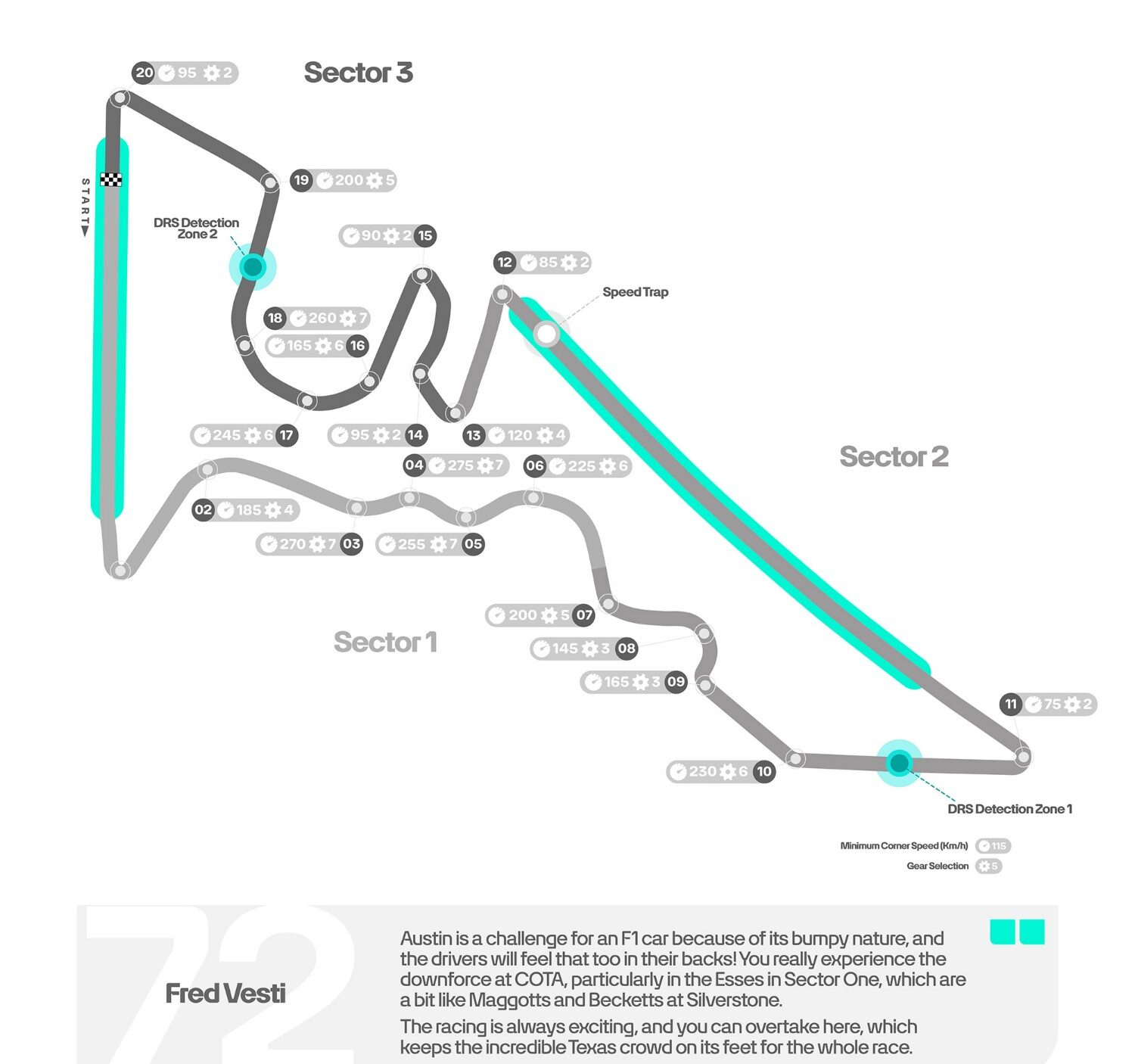
The infamous Turn 1
They say everything is bigger in Texas and Turn 1 certainly lives up to that statement. With a steep uphill approach, how do you master that on lap 1 and manage to overtake during the race without losing the place back through Turn 3 – 6?
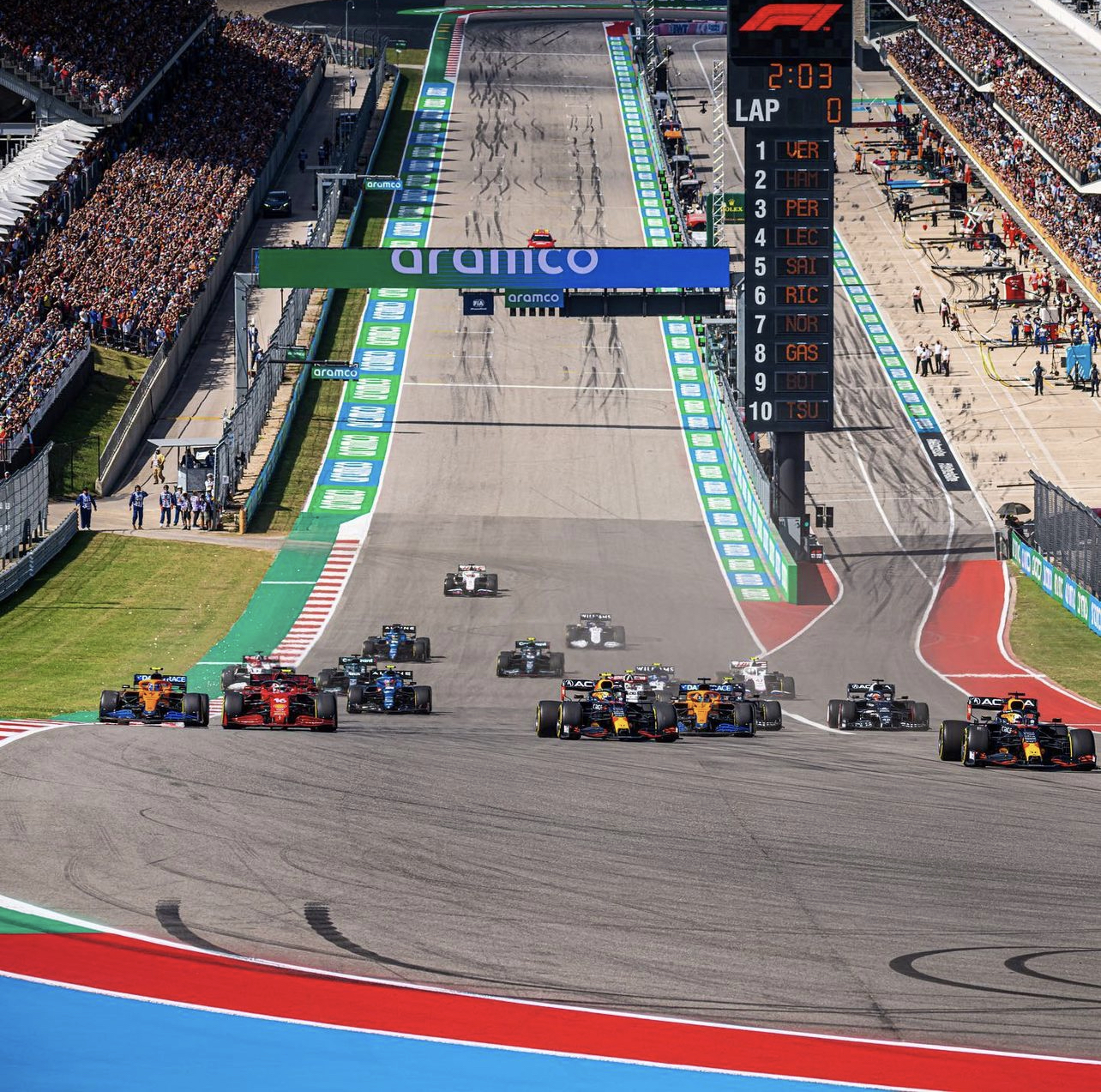
It’s a pretty unique corner. It becomes very wide towards the apex, you can’t actually see the track as it’s over a crest, and it’s super wide. The apex itself is very narrow so it creates opportunities for a lot of different lines. Overtaking there is a big opportunity with it being straight after a DRS zone as well.
There aren’t many corners that have that sort of width to it. It’s kind of easy to lock-up towards the apex because you go over that crest but as you hit the brakes, you’re on that hill so you can brake very hard because of that. After Turn 1, you go downhill again into those ‘esses’ and that’s where following becomes a bit tricky so if you’ve got the position, it’s pretty easy to keep it afterwards because of the high-speed corners.
TV Times
All Times Eastern
| Friday, October 17, 2025 | Location | TV Times | Network |
| Formula 1 United States Grand Prix Practice 1 | COTA, Austin TX | 1:25pm – 2:30pm (Live) | ESPN2 |
| Formula 1 United States Grand Prix Sprint Qualifying | COTA, Austin TX | 5:25pm – 6:30pm (Live) | ESPN2 |
| Saturday, October 18, 2025 | Location | TV Times | Network |
| Formula 1 United States Grand Prix Sprint Race | COTA, Austin TX | 12:55pm – 2:00pm (Live) | ESPNews |
| Formula 1 United States Grand Prix Sprint Race – Ted’s Notebook | COTA, Austin TX | 2:30pm – 3:00pm (Live Stream) | ESPN+ |
| Formula 1 United States Grand Prix Qualifying Pre-Show | COTA, Austin TX | 4:00pm – 4:55pm (Live Stream) | ESPN+ |
| Formula 1 United States Grand Prix Qualifying | COTA, Austin TX | 4:55pm – 6:00pm (Live) | ESPNews |
| Formula 1 United States Grand Prix Qualifying – Ted’s Notebook | COTA, Austin TX | 7:00pm – 7;30pm (Live Stream) | ESPN+ |
| Sunday, October 19, 2025 | Location | TV Times | Network |
| Formula 1 Pre-Race | COTA, Austin TX | 1:30pm – 3:00pm (Live) | ABC |
| Formula 1 United States Grand Prix | COTA, Austin TX | 3:00pm – 5:00pm (Live) | ABC |
| Formula 1 United States Grand Prix Post-Race | COTA, Austin TX | 5:00pm – 6:00pm (Live Stream) | ESPN+ |
| Formula 1 United States Grand Prix Ted-Notebook | COTA, Austin TX | 6:00pm – 6:30pm (Live Stream) | ESPN+ |
| Formula 1 United States Grand Prix | COTA, Austin TX | 8:00pm – 10:30pm (Replay) | ESPN2 |
| Formula 1 United States Grand Prix | COTA, Austin TX | 11:00pm – 1:30am (Replay) | ESPNews |
Pirelli Tires
The United States Grand Prix will be the second race of the season for which Pirelli is bringing three non-consecutive compounds, the last time being Spa-Francorchamps and the available tyres will once again be the C1 as Hard, the C3 as Medium and the C4 as Soft. In Belgium, bad weather meant it was not possible to find out how this choice might have affected strategy and so the event in COTA could be the first real test of this choice, which sees the use of a harder Hard than last year at the American track, while the Medium and Soft are the same.
The increased performance difference between the hardest compound and the middle one should, theoretically, give rise to two scenarios. If drivers prefer the C1, the slowest but also the most consistent of the three, then they could run a one-stop race combining it with the C3. On the other hand, using the latter along with the C4, with its improved resistance to degradation, would produce quicker lap times but would almost certainly require two stops. Another similarity with the Belgian round is that Austin is also running to the Sprint format, which means teams only have one hour to try the various options over long and short runs, which could add to the uncertainty as to how the weekend might pan out.
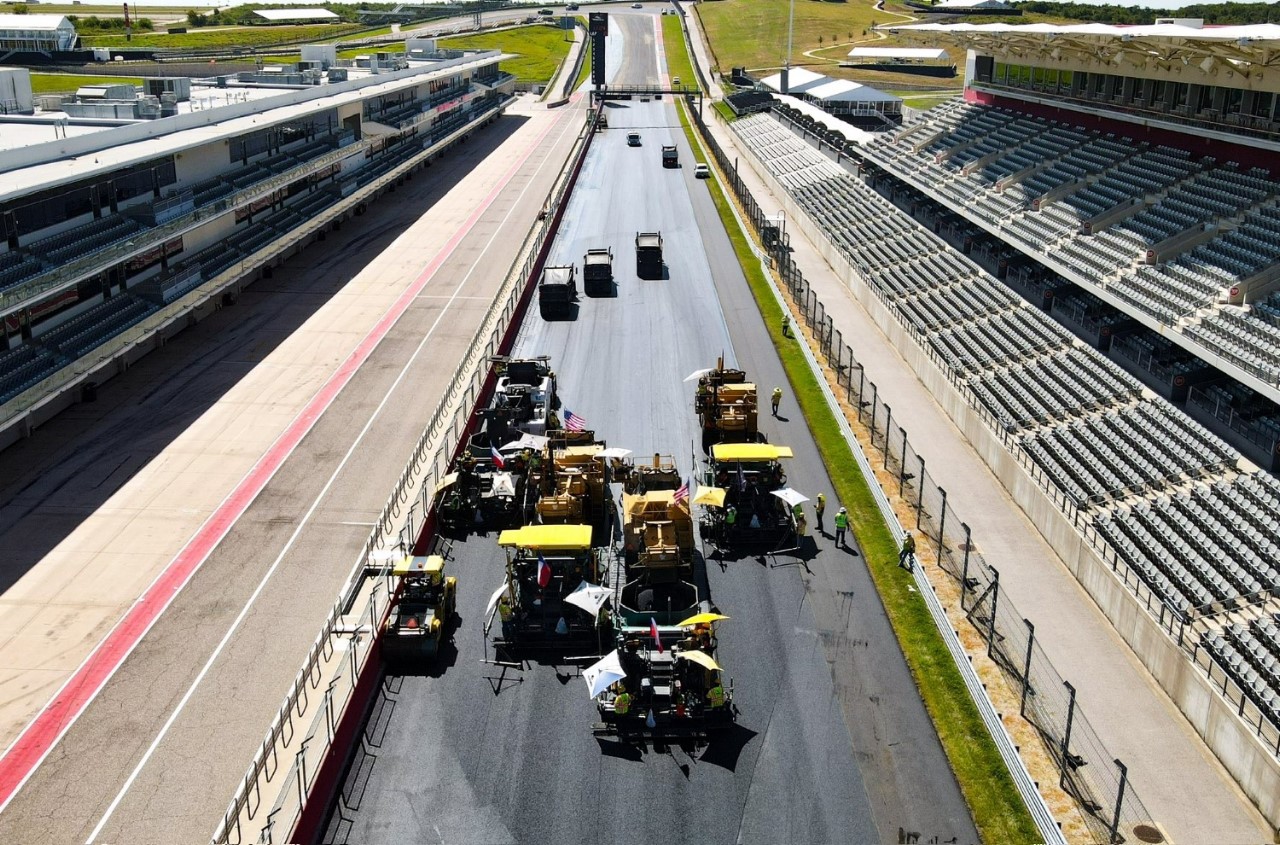
The abrasiveness of the track could therefore have changed since last year, given that a new layer of bitumen is usually smoother than an old track surface. This adds to the importance of acquiring as much data as possible during the one and only hour of free practice, early on Friday afternoon as the Sprint format returns for the Austin weekend.
Other changes include the use of fake gravel for the run-off areas at some corners, as already seen at other tracks, Zandvoort for example. This has been done to alleviate the controversy that can arise over exceeding track limits, without the problem of real gravel being thrown onto the track. The new surface should also have dealt with the problem of the small bumps that have developed on the racing line at some points over the years, which made life hard for the drivers and upset the car’s handling.
15 drivers started last year’s race in Austin on the Medium tire, including the trio that made it to the podium, while the remaining five went with the Hard C2. The Soft was never really an option on race day, with only Alpine’s Esteban Ocon fitting it on the last lap to pick up a precious extra point in its battle with Williams, for setting the fastest time.
The most popular strategy was a one-stop, with only a handful of drivers on a planned two-stop, as well as Albon who had to pit after just three laps. Although the Medium showed significant signs of wear in the Sprint, in the main event drivers managed to extend the stint with careful management, helped by a Safety Car period, despite the weight from being on full tanks. Less graining than on the previous day also made the one-stop more effective.
During last year’s Austin race weekend, track evolution played an important role. This phenomenon refers to the progressive increase in grip that the track surface provides the more laps the cars run, not only within each session but also throughout the entire weekend. This is due to the rubber left by the tyres on the track surface, which makes the circuit faster, leading to a constant reduction in lap times. Track evolution also affects tire behavior, making them less prone to sliding and degradation. This was one of the reasons why last year at COTA, drivers were able to extend their stints on the Medium compound further than suggested by data from the Sprint race, completing Sunday’s race with just one pit stop.
